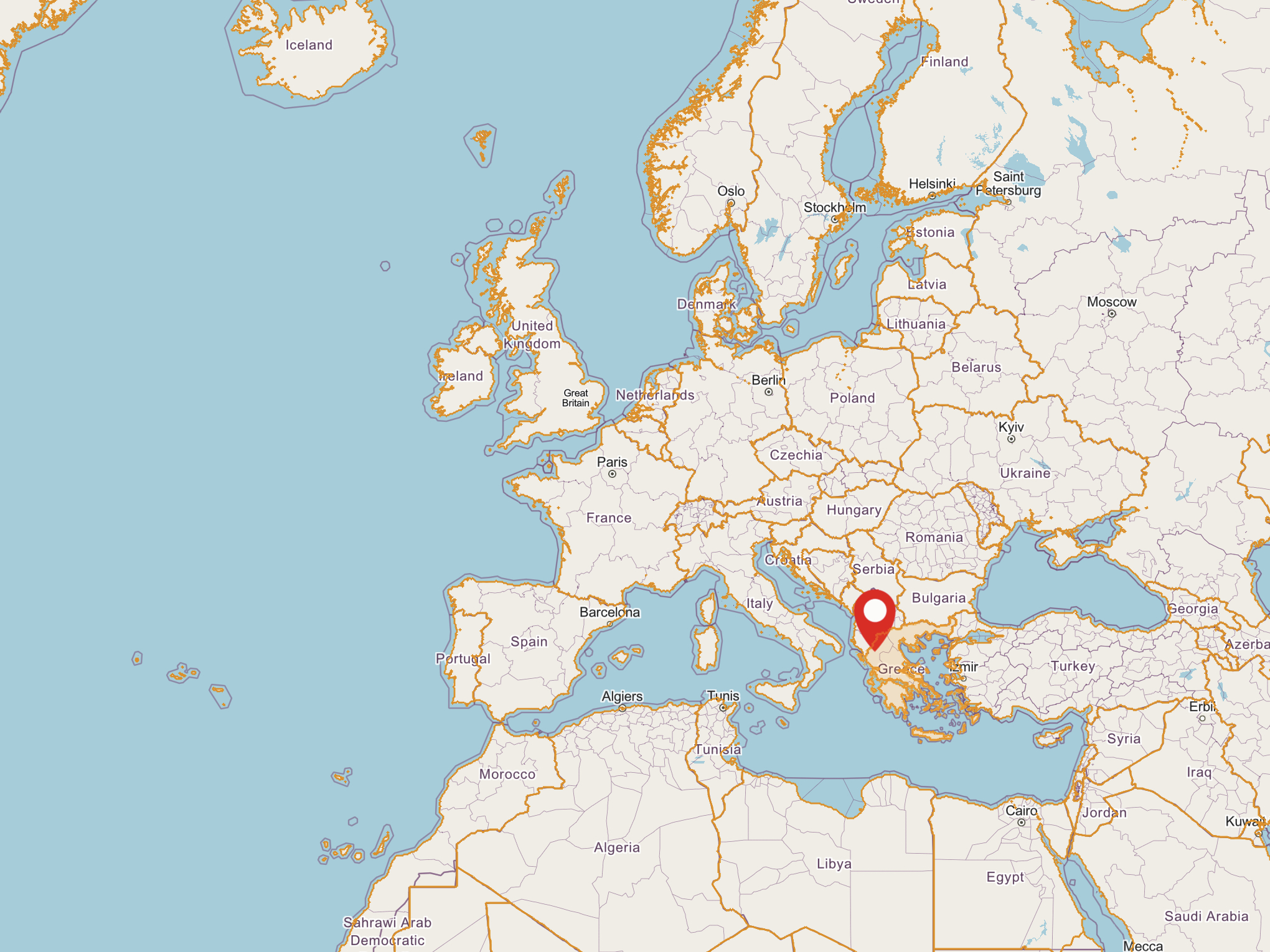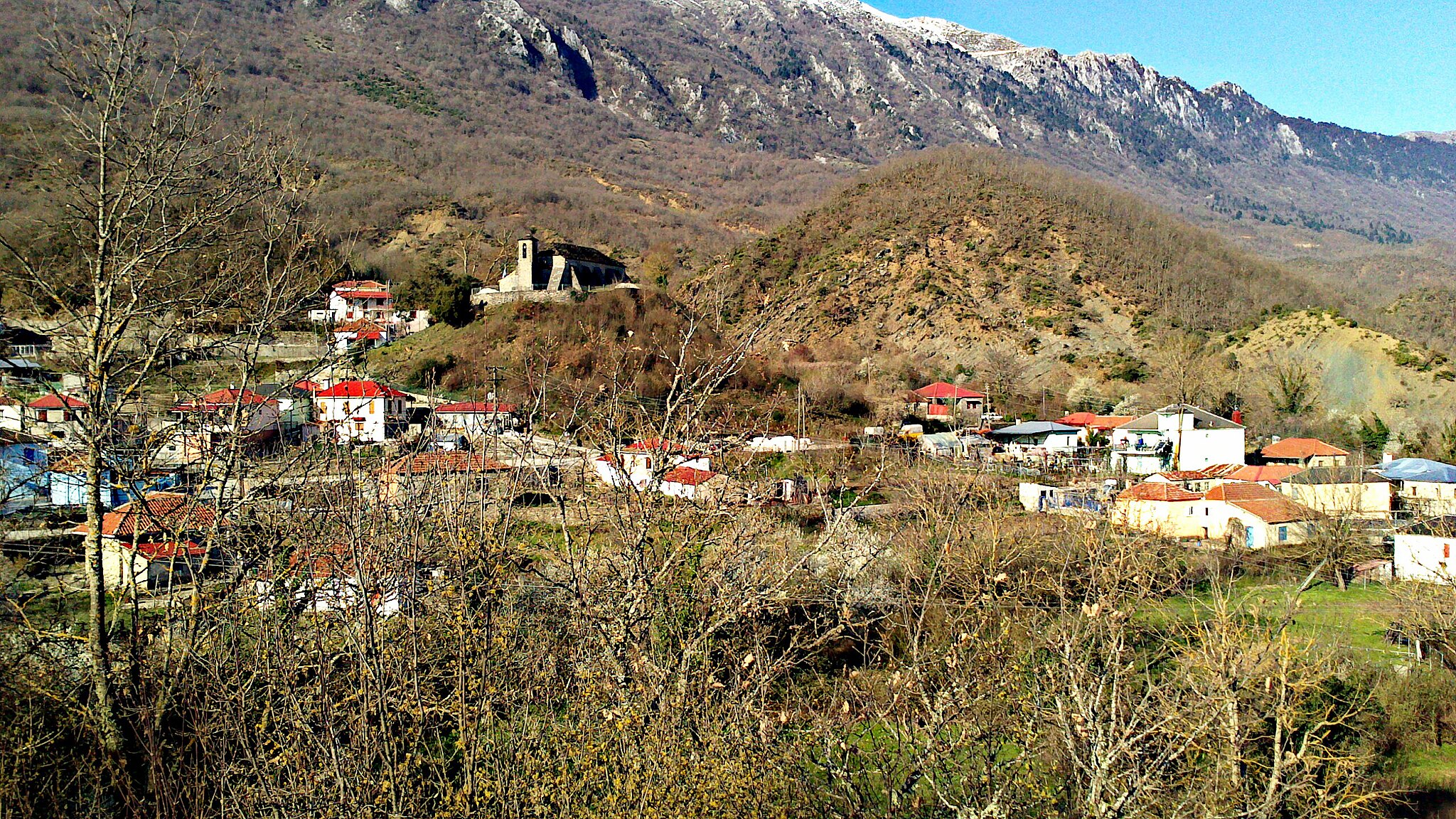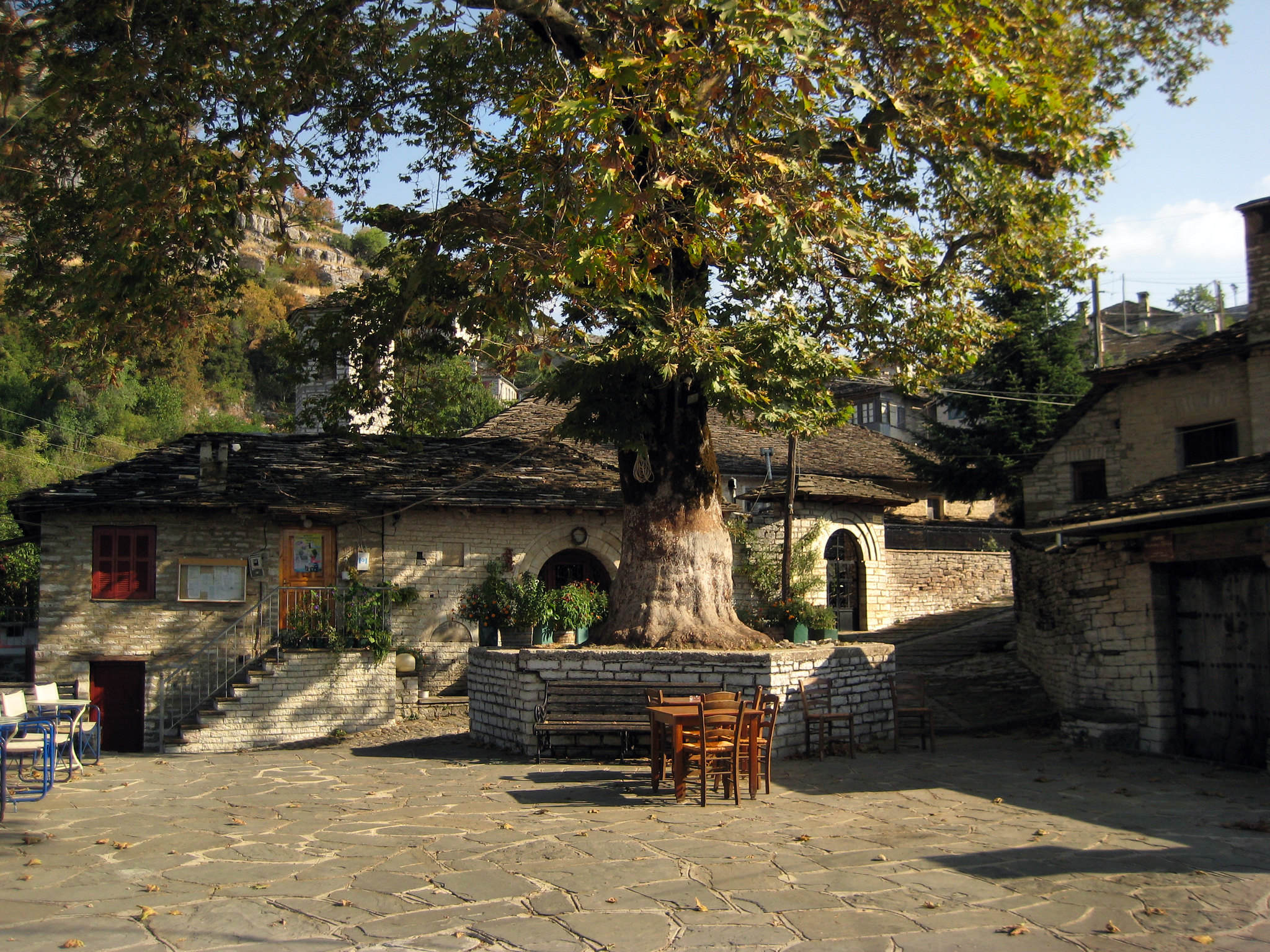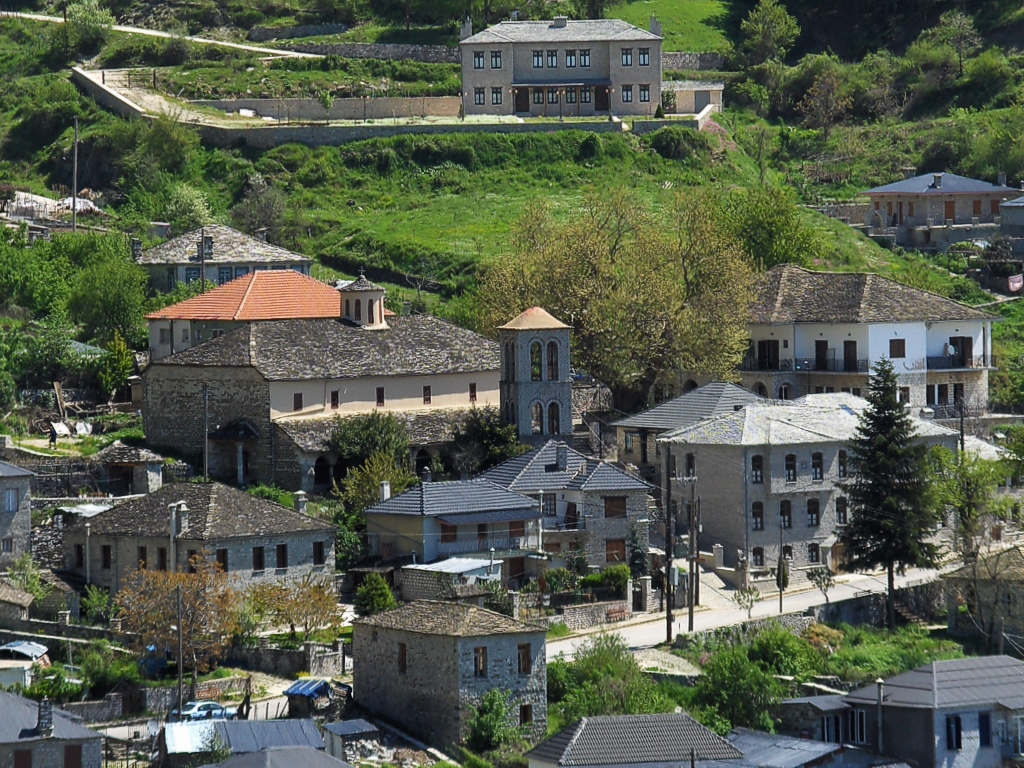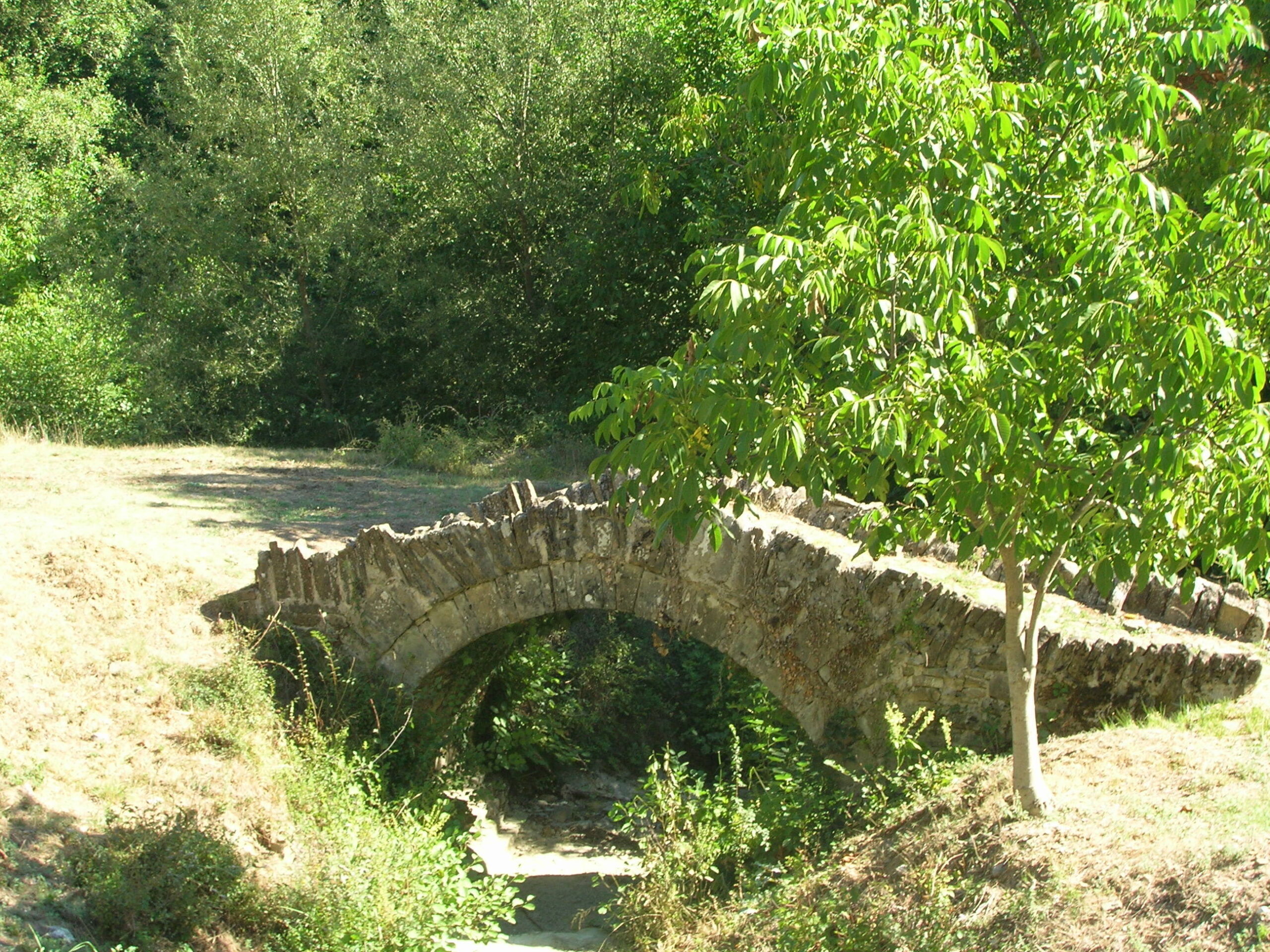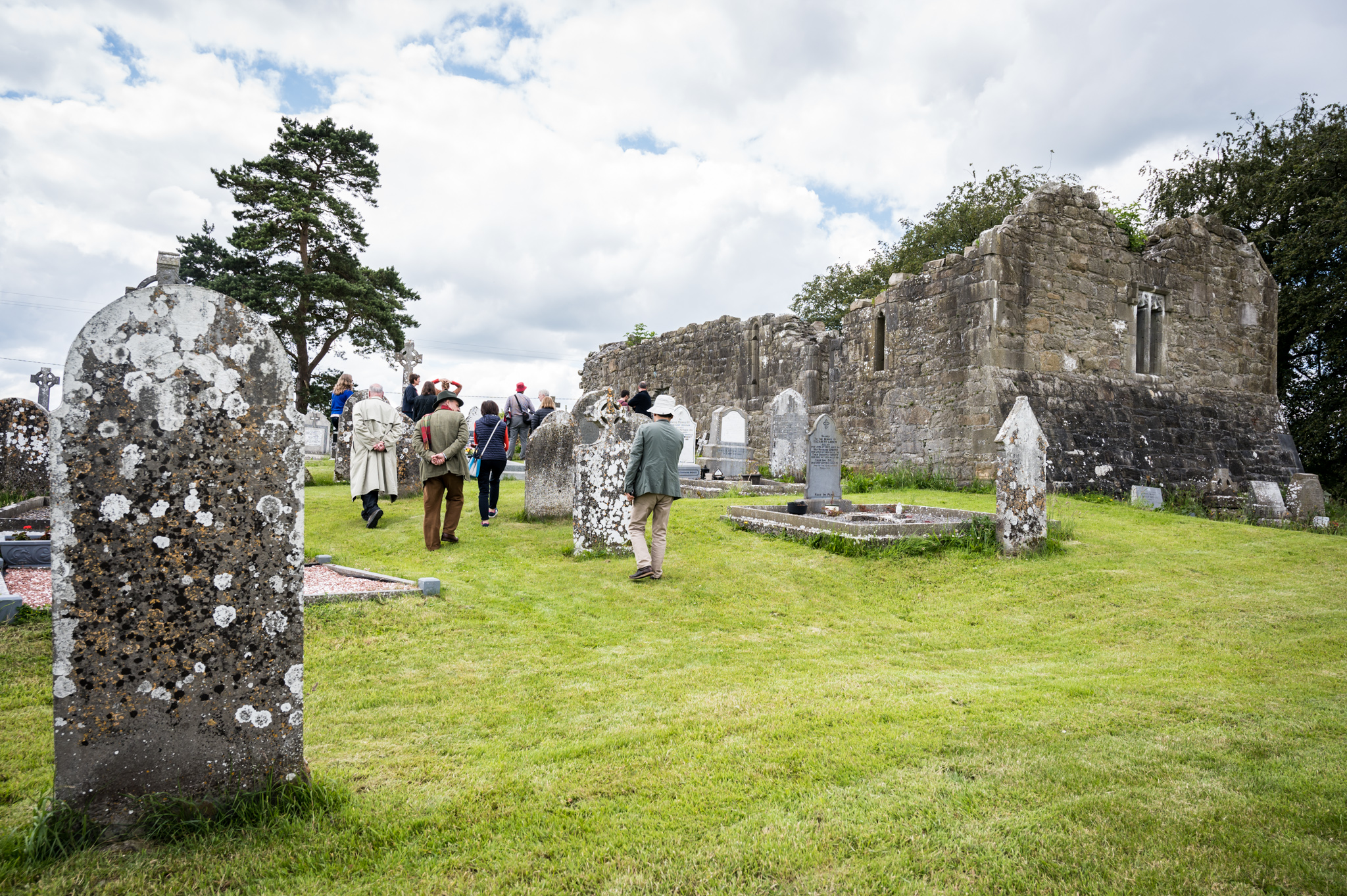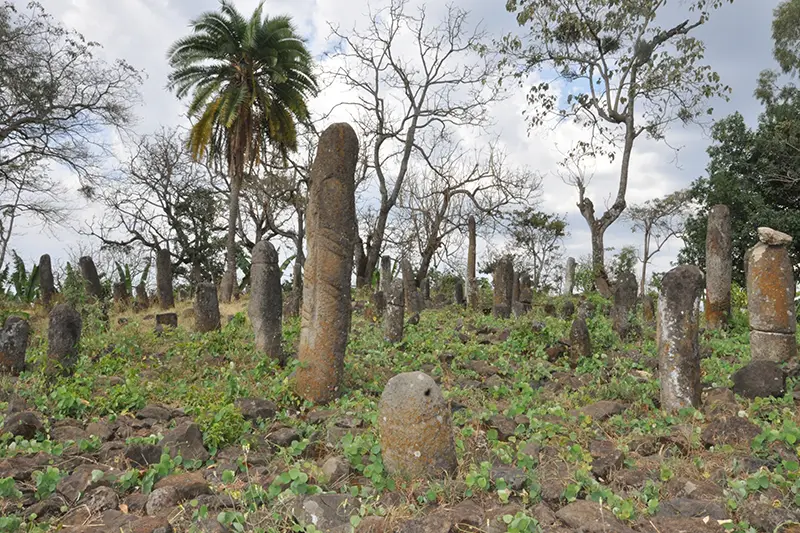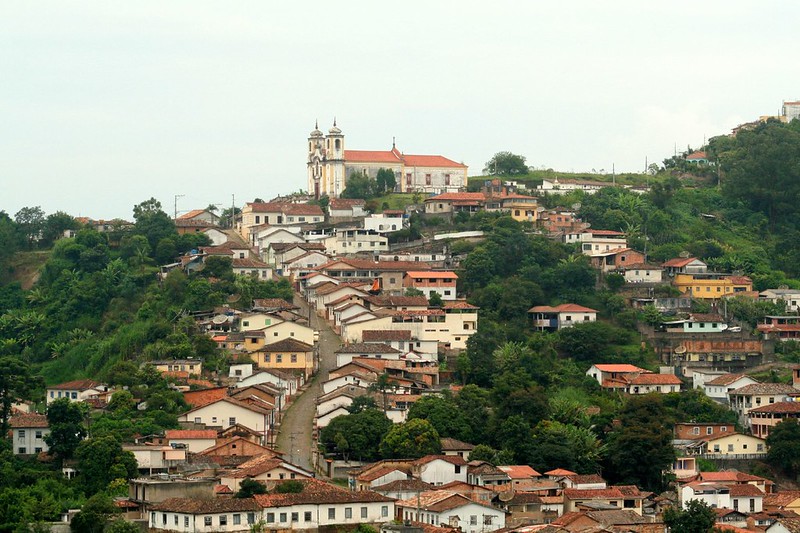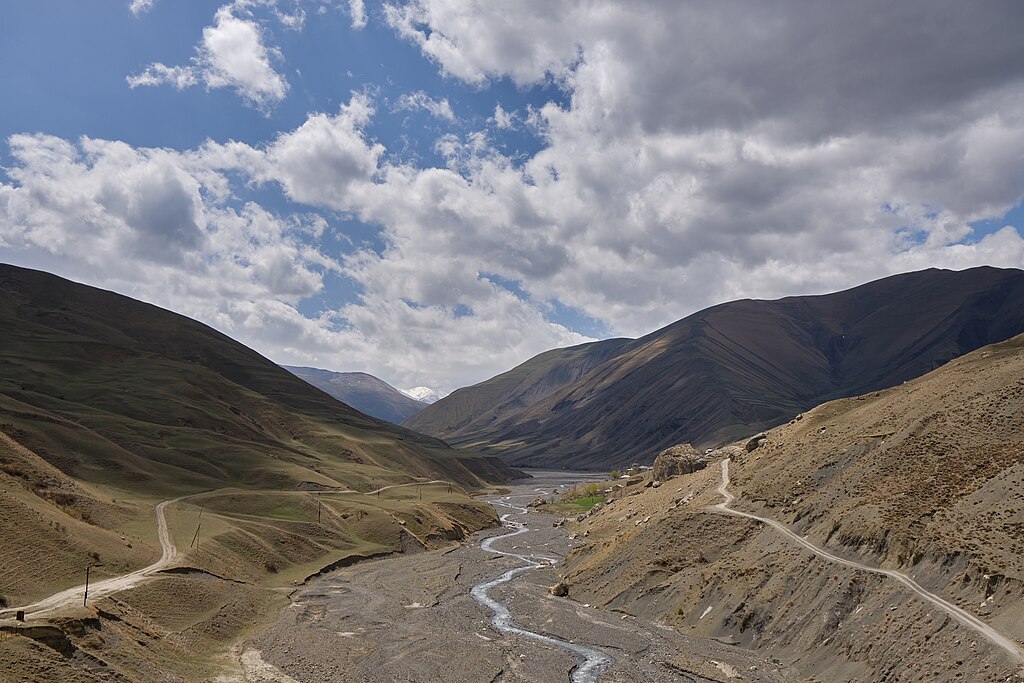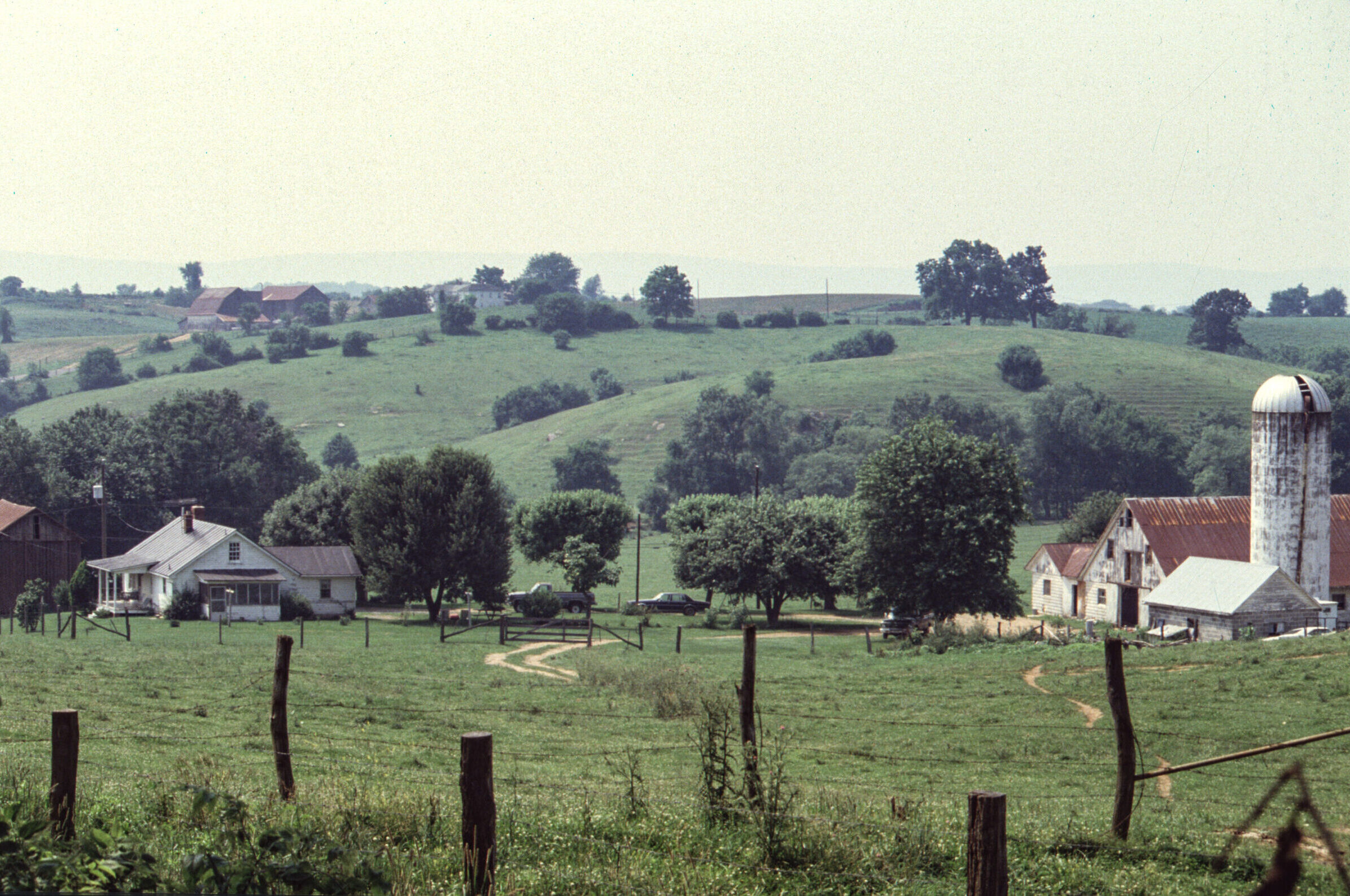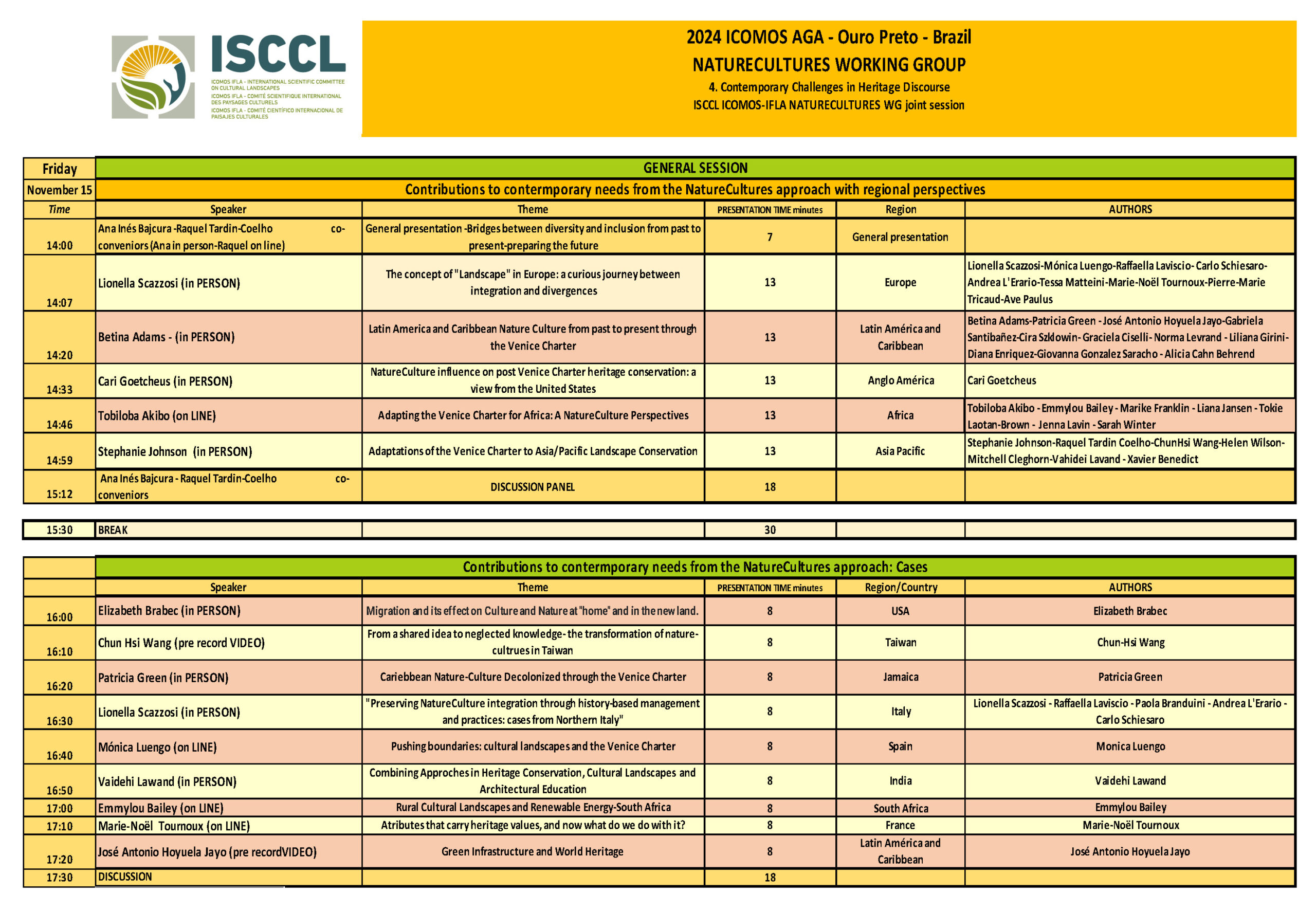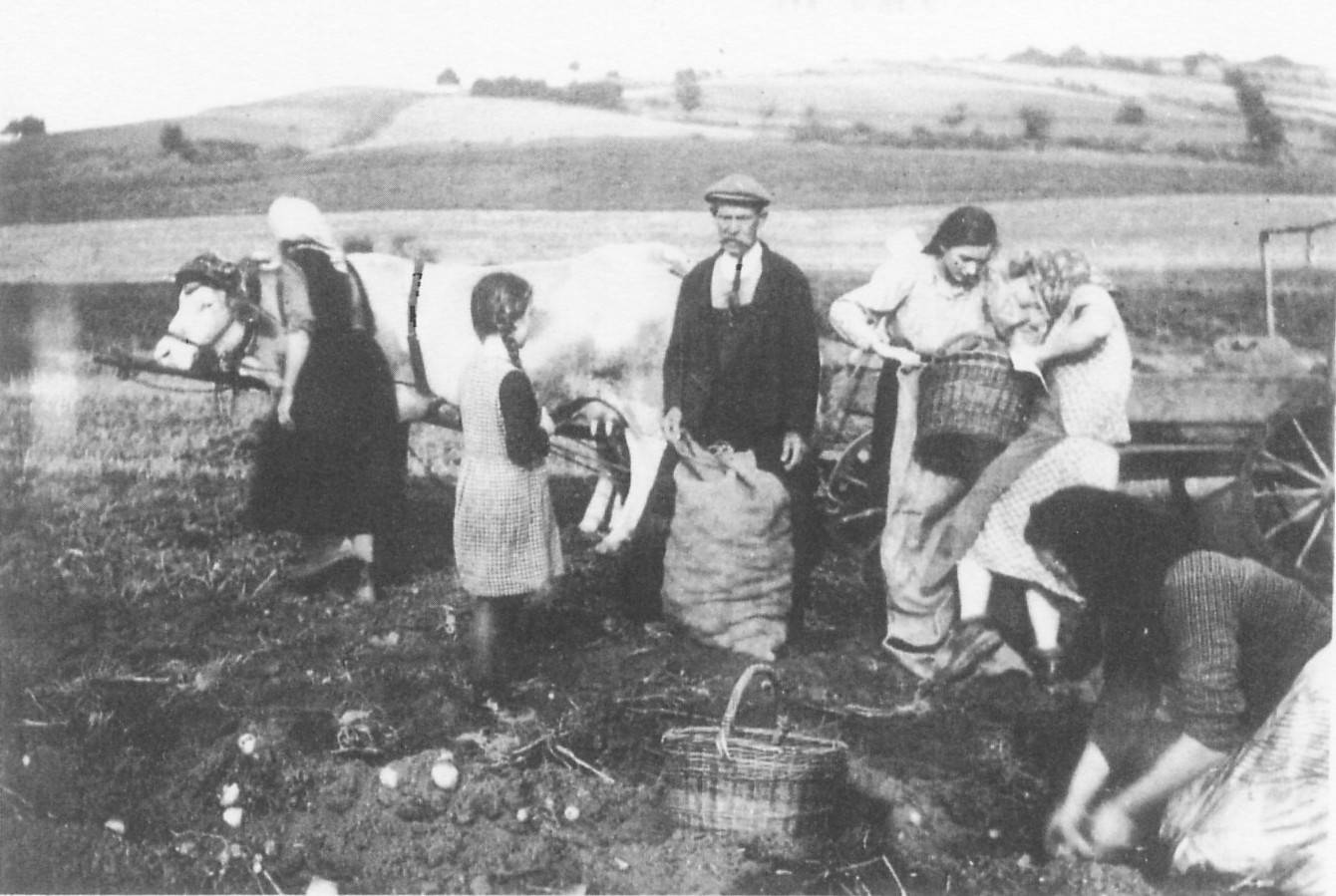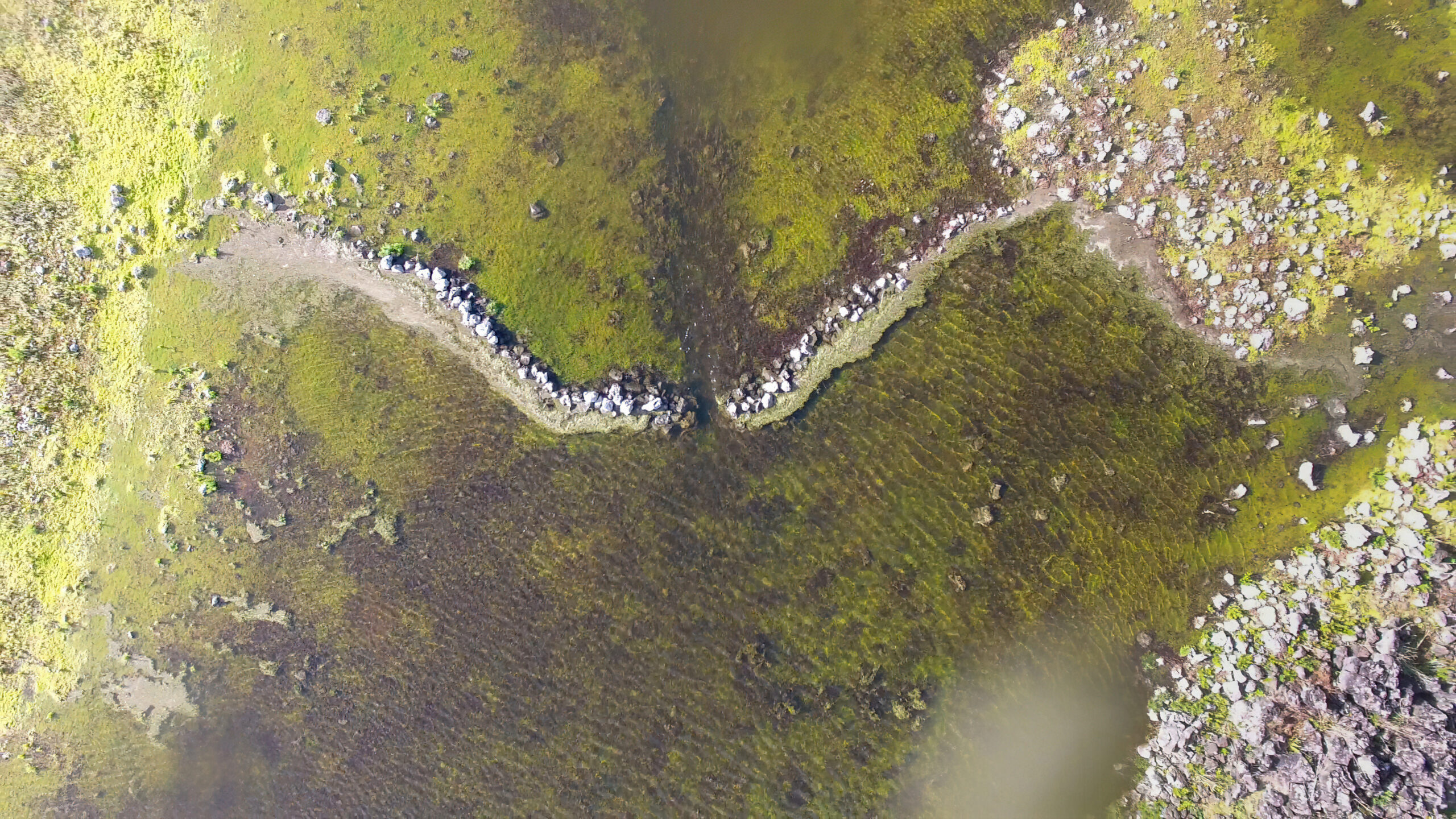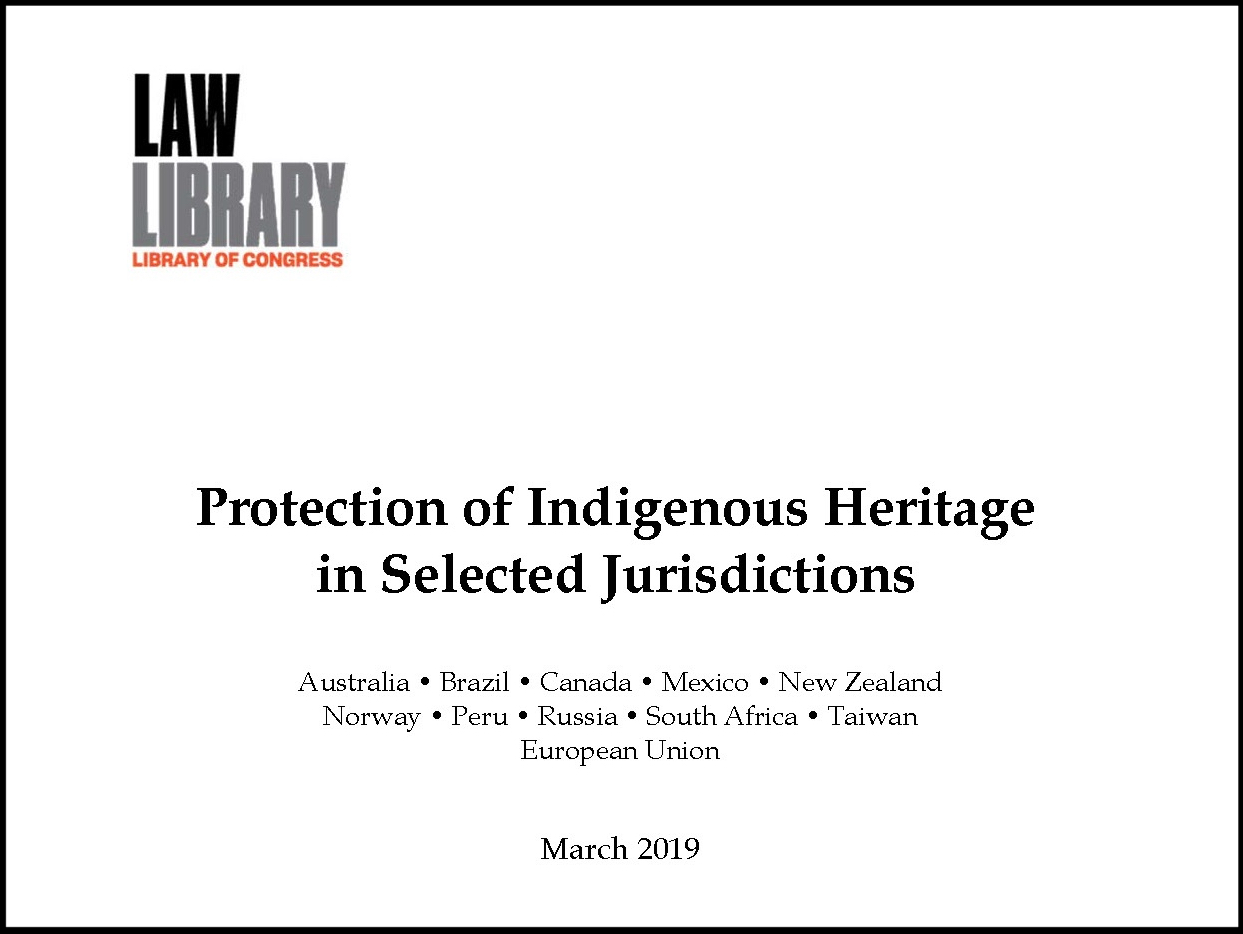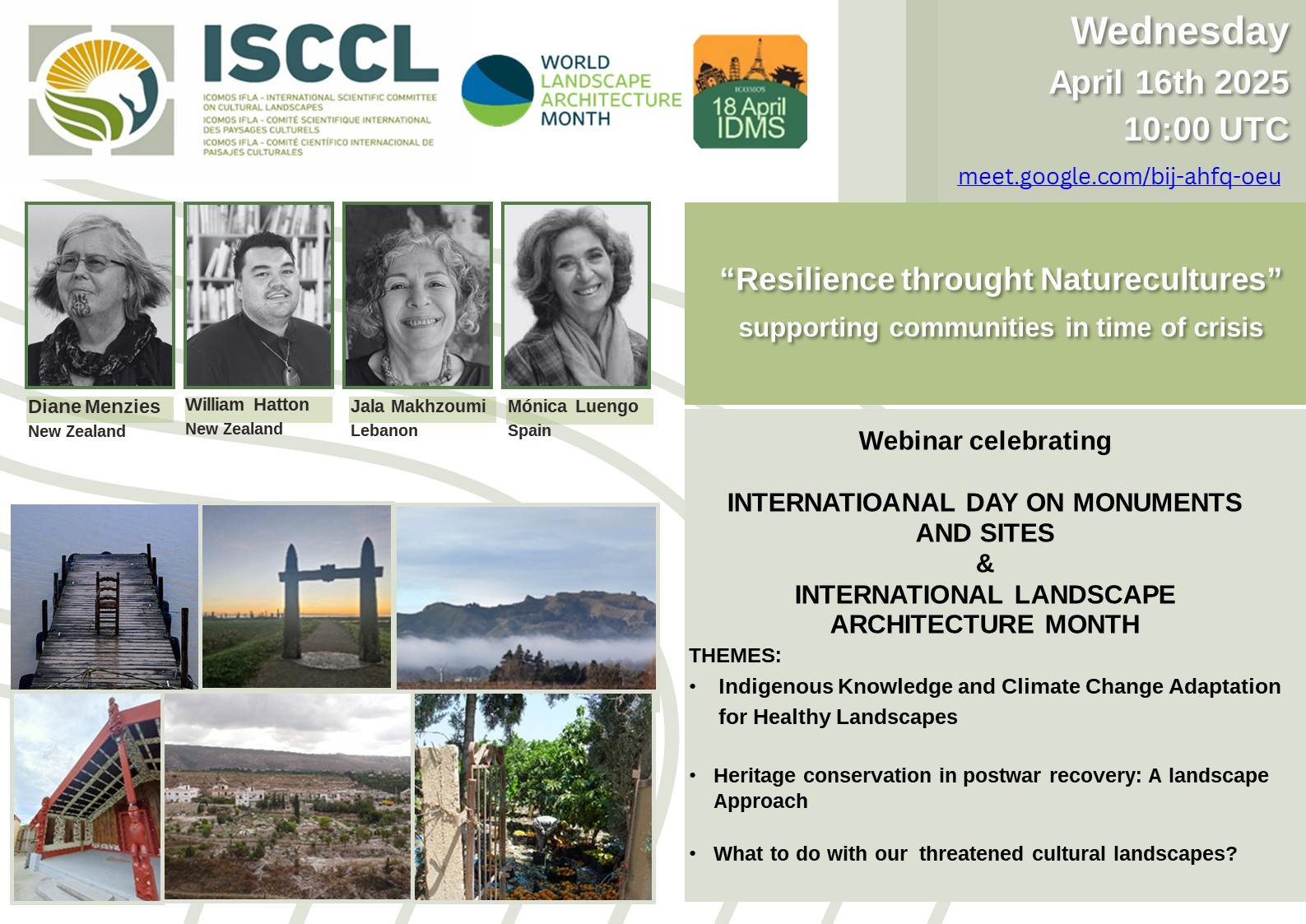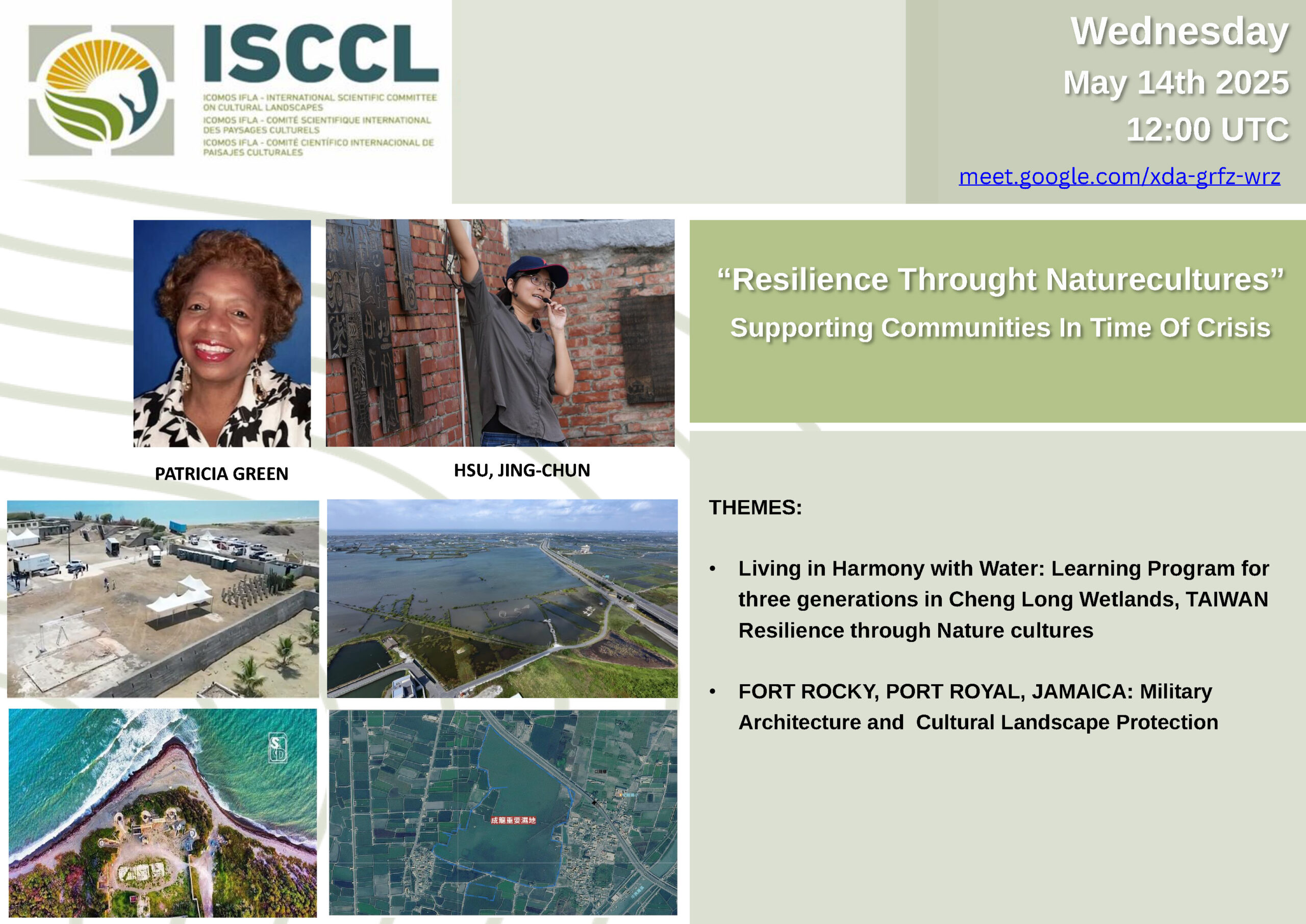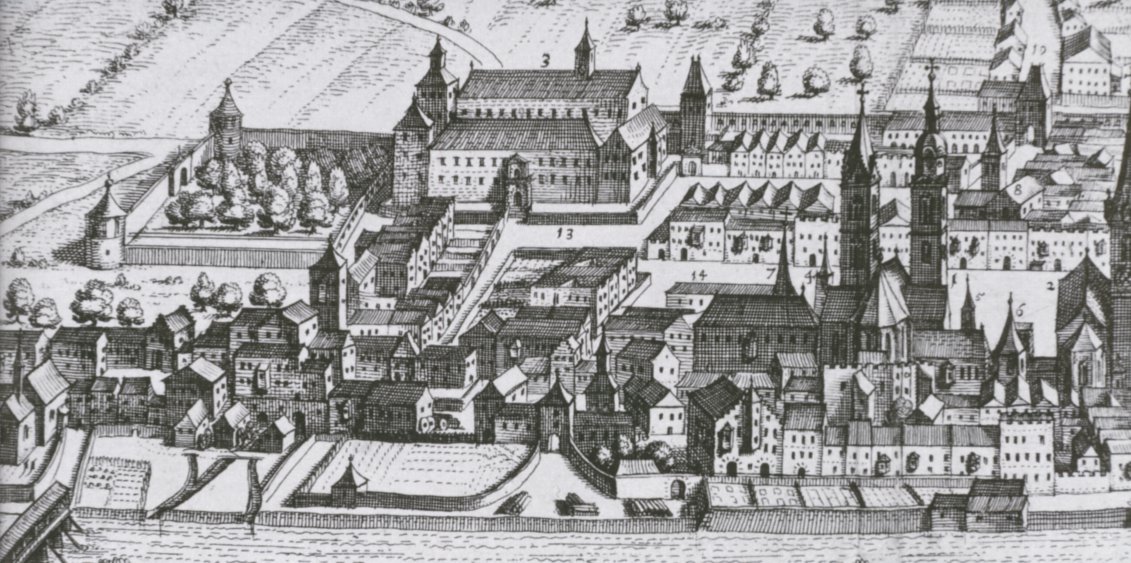The Zagori Cultural Landscape, Greece
Stone Villages – ancient Sycamore trees – Sacred Forests
Found in the rural Epirus Region of northwestern Greece, the Zagori Cultural Landscape is comprised of traditional 18th century small stone villages (Zagorochoria) which run along the western slopes of the Pindus mountain range. The name Zagori, Slavic for ‘the place behind the mountain’ links back to the traditional architecture which has adapted over time to the mountain topography.

Zagori landscape – On the right is the village of Kapesovo and on the left the village of Monodendri and the one edge of the Vikos gorge. The stone houses integrate with the surrounding environment. (Kilymis 2008)
Sacred forests and place-defining trees are acknowledged in the Nomination text as character-defining features for the region (Bendermacher-Gerousi 2023, 19), along with the stone villages and diversity of bio-cultural ecosystems. The villages are often structured around a central square with an historic plane tree, that itself occupies a sacred space in the community, often next to the church. The villages are also surrounded by the sacred forests that have been maintained by local communities for generations. These sacred trees and groves are often in the area of monasteries, chapels and icons (Bendermacher-Gerousi 2023, 56).
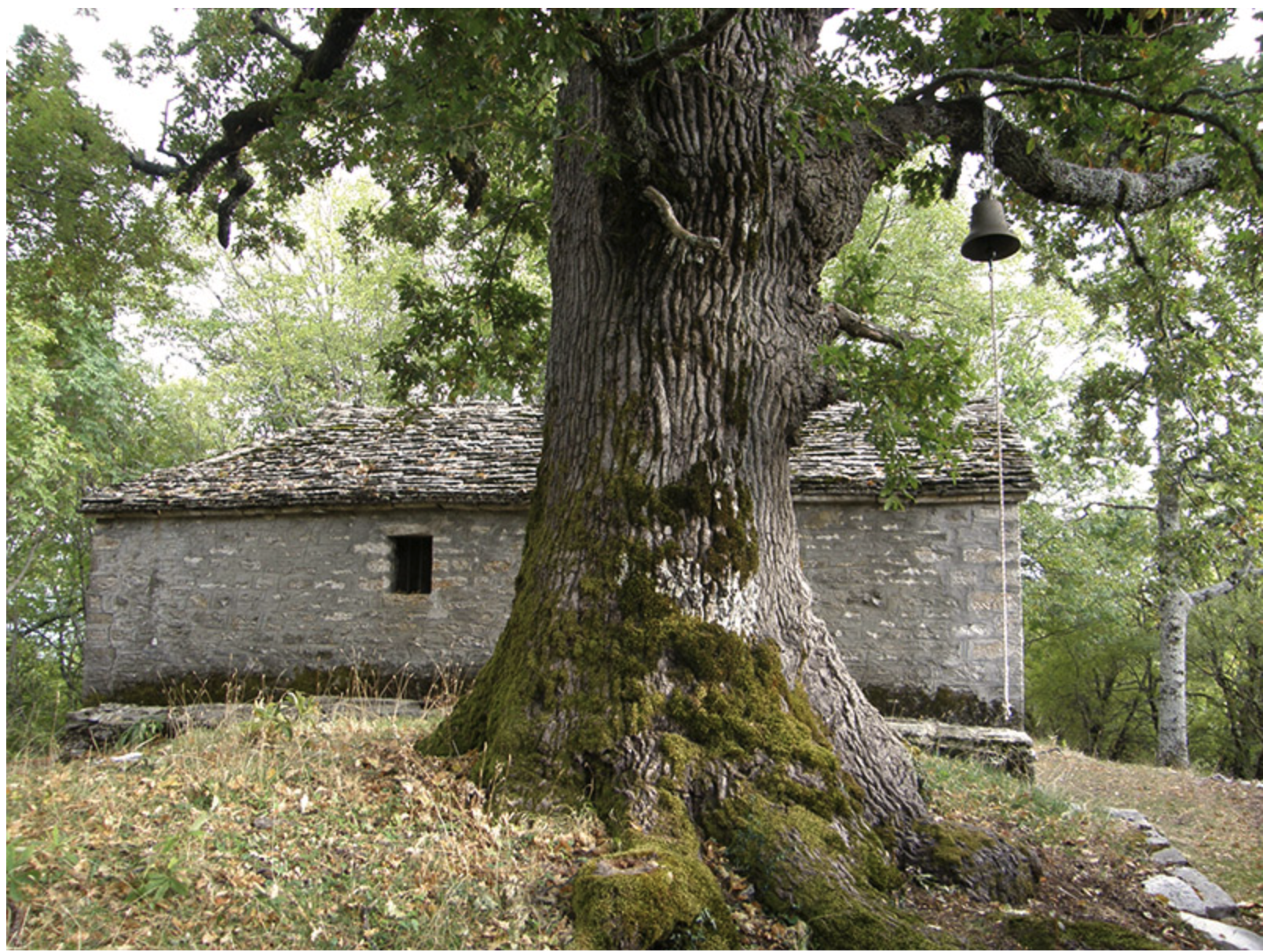
An example of a sacred oak located next to a chapel in Viysa (Kalliopi Stara 2006)
The villages and connecting networks are often characterized by drystone pathways, staircases, and arched bridges which link village centres and act as social and political connections for the local communities within the areas around the Vikos and Voïdomatis Rivers (UNESCO, 2023). There are 20 villages that make up the nomination within the 3 municipal units of Central Zagori, Tymphi and Pápigo, all within the municipality of Zagori.
In addition to the more recent settlements of the 18th century, archaeological evidence indicates traces of habitation from the Upper Paleolithic, burials from the Late Bronze Age, Slavic tribal settlement from the 6th century CE, and remnants of Byzantine and Ottoman rule, particularly in the stone churches which are important features of the village squares. The surrounding rural landscape has been created over time through controlled burns, the construction of drystone terraces, and animal husbandry practices related to transhumance.
Although the State Party did not nominate the property for inscription under criterion (v) which recognizes “outstanding example[s] of a traditional human settlement” for the World Heritage List, criterion (v) was part of the original Tentative List nomination. During the evaluation process, ICOMOS stated that “the nominated property exhibits an exceptionally well-preserved traditional settlement pattern that goes back to the 18th century and that justifies criterion (v)” (ICOMOS, 2022). Although ICOMOS argued against the site’s nomination as a cultural landscape, the final decision (45 COM 8B.34, 427, 428) listed as a cultural landscape under Criterion (v). The Statement of Outstanding Universal Value cited the “agro-pastoral landscape,” “age-old individual sacred trees, groves, alpine meadows, undisturbed rivers and ravines”(45 COM 8B.34, 428).
As a result, the site was inscribed under:
Criterion (v) as the Zagori villages are an exceptional example of traditional human settlement, particularly in the use of stone and stonework of vernacular architecture and public infrastructure which was influenced by an exchange of ideas from the Balkans to Asia Minor to Russia. The import of ideas and styles to the villages provided investment and development for the isolated region and the legacy of Byzantine and Ottoman vernacular buildings continue to be reflected in the settlement patterns and architectural features of the Zagori area.
Interactive Map
The dotted orange line on the map below indicates the extent of the Zagori Cultural Landscape buffer area, which is co-terminous with the municipality of Zagori. Rivers that flow through the area are indicated in blue, and the red markers indicate the location of the villages illustrated in the photo gallery below. (Brabec 2024; ESRI, Earthstar Geographics; Hellenic Statistical Authority; Eurostat; Willian & Mary geoLab)
Additional resources (open source with URL links):
For further information on the site, including the nomination file and ICOMOS Evaluation can be found at: https://whc.unesco.org/en/list/1695.
Anon. 2015. Sacred Forests of the Villages of Zagori and Konitsa. https://wip.culture.gr/wp-content/uploads/2016/11/Sacred_forests.pdf, archived https://perma.cc/LP84-NE8Q
Bendermacher-Gerousi, Evgenia. 2023. Zagori Cultural Landscape: Nomination for Inscription on the UNESCO World Heritage List. Hellenic Republic – Ministry of Culture and Sports. https://whc.unesco.org/en/list/1695/documents/.
Moudopoulos-Athanasiou, F., 2023. Pathways to Know and Sidetracks to Forget: Walking and the Montane Cultural Landscape of Zagori (Northwestern Greece). Journal of Eastern Mediterranean Archaeology and Heritage Studies, 11(1), pp.1-20.
Sacred Natural Sites. 2017. The Sacred Groves of Zagori: A locally-adapted conservation System, Epirus, Greece. https://sacrednaturalsites.org/items.the-sacred-groves-of-zagori-epirus-greece/ , archived https://perma.cc/UK5J-GRTX
Stara, K., Tsiakiris, R. and Wong, J.L., 2015. The trees of the sacred natural sites of Zagori, NW Greece. Landscape Research, 40(7), pp.884-904.
Stara, Kalliopi, Rigas Tsiakiris, Vassilis Nitsiakos, John M. Halley. 2016. Religion and the Management of the Commons. The Sacred Forests of Epirus, in Mauro Agnolett and Emanueli Francesca (eds.) Biocultural Diversity in Europe, 283-302, Springer International Publishing. Archived https://perma.cc/Y5NF-WRVJ.
World Heritage Committee. 2023. WHC 23 45.COM 19, https://whc.unesco.org/archive/2023/whc23-45com-19-en.pdf
Photos:
Kevaggelidis. 2014. General view of Kavallari village. https://commons.wikimedia.org/wiki/File:Kavalari-zagoriou.jpg
Kilymis, Dimitris. 2008. Kapesovo – Made of Stone. Flickr. https://www.flickr.com/photos/dkilim/2848233522/
Kilymis, Dimitris. 2008. Zagori Panorama. Flickr. https://www.flickr.com/photos/dkilim/2848224114/
Skamnelis. 2009. Skamneli village centre with the church of the Apostles. https://commons.wikimedia.org/wiki/File:Skamneli_village_centre.jpg
Skamnelis. 2009. Skamneli village square in Zagori. https://commons.wikimedia.org/wiki/File:Skamneli_village_square.jpg
Stara, Kalliope. 2009. Chapel dedicated to Transfiguration/Metamorphosis of Christ and its associated belfry oak (one of the ten largest in diameter of the 327 surveyed) in Vitsa. https://sacrednaturalsites.org/items/the-sacred-groves-of-zagori-epirus-greece/


